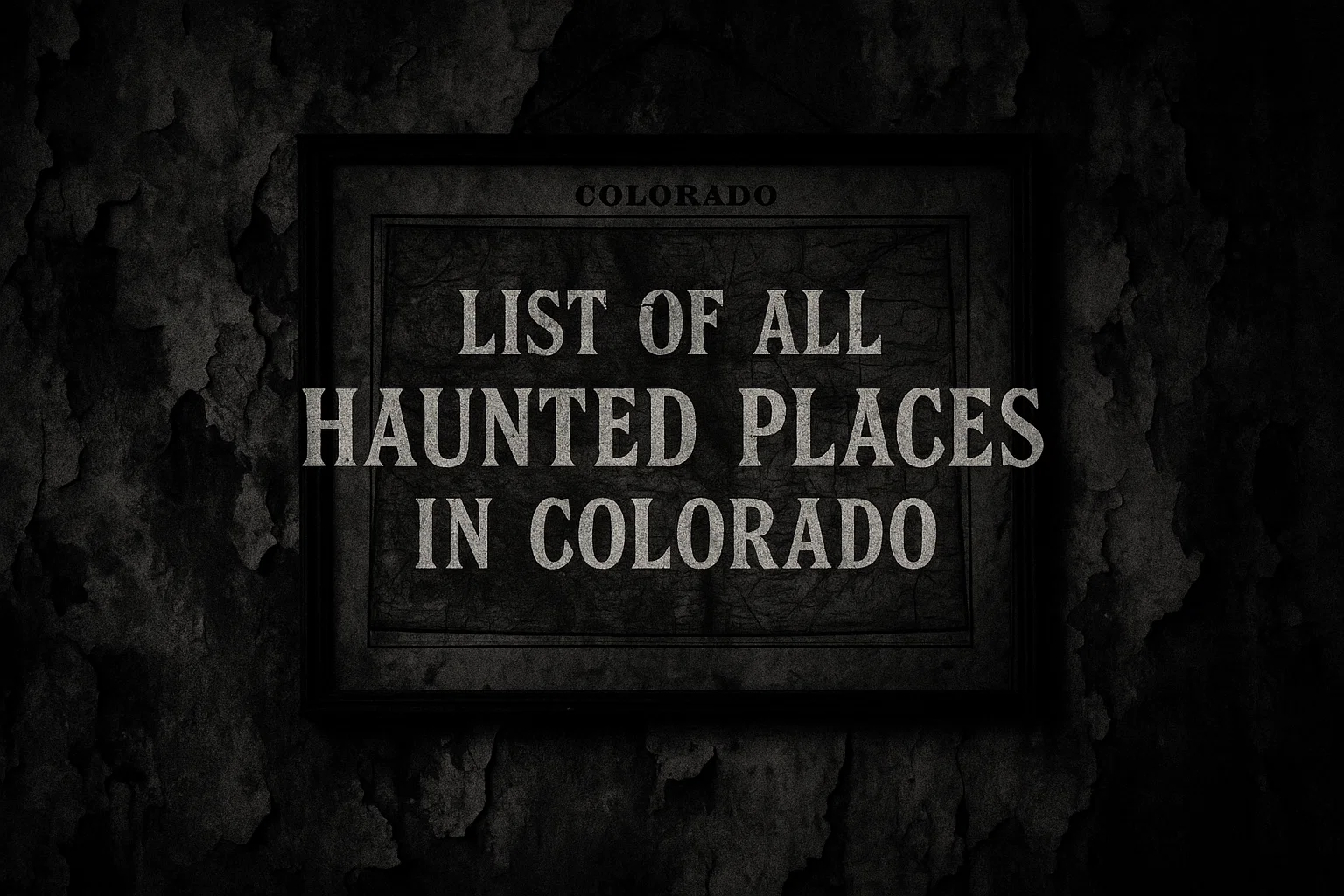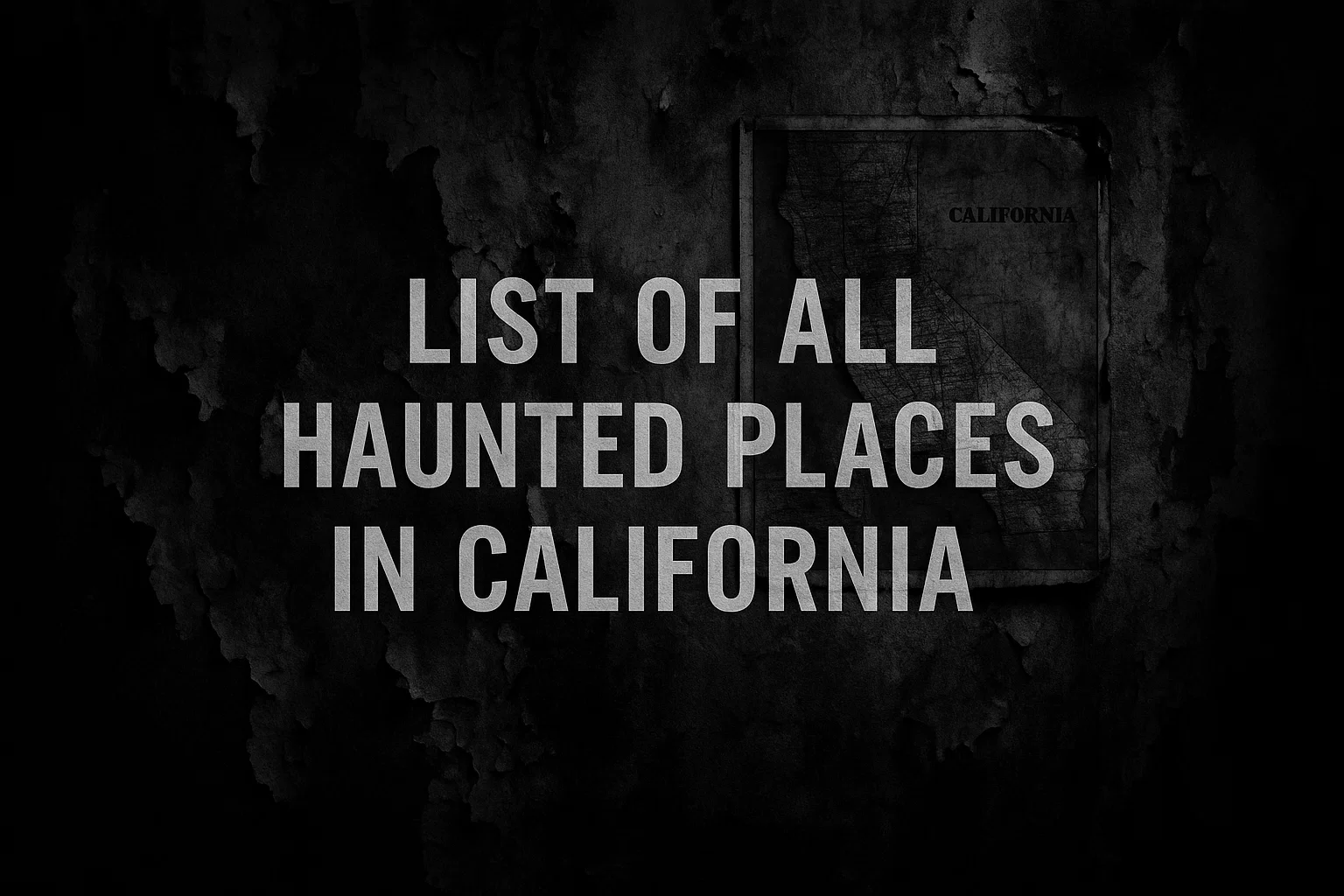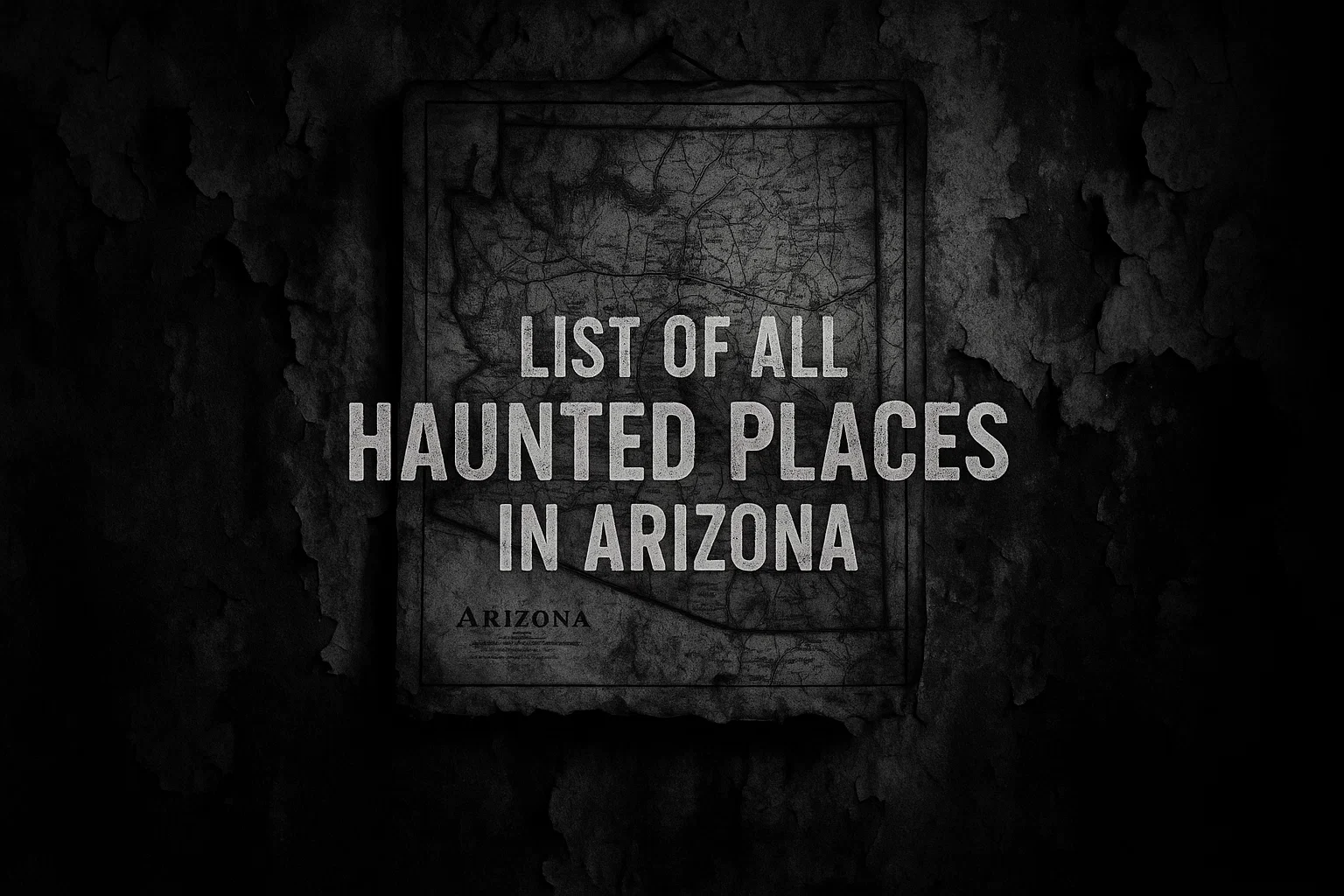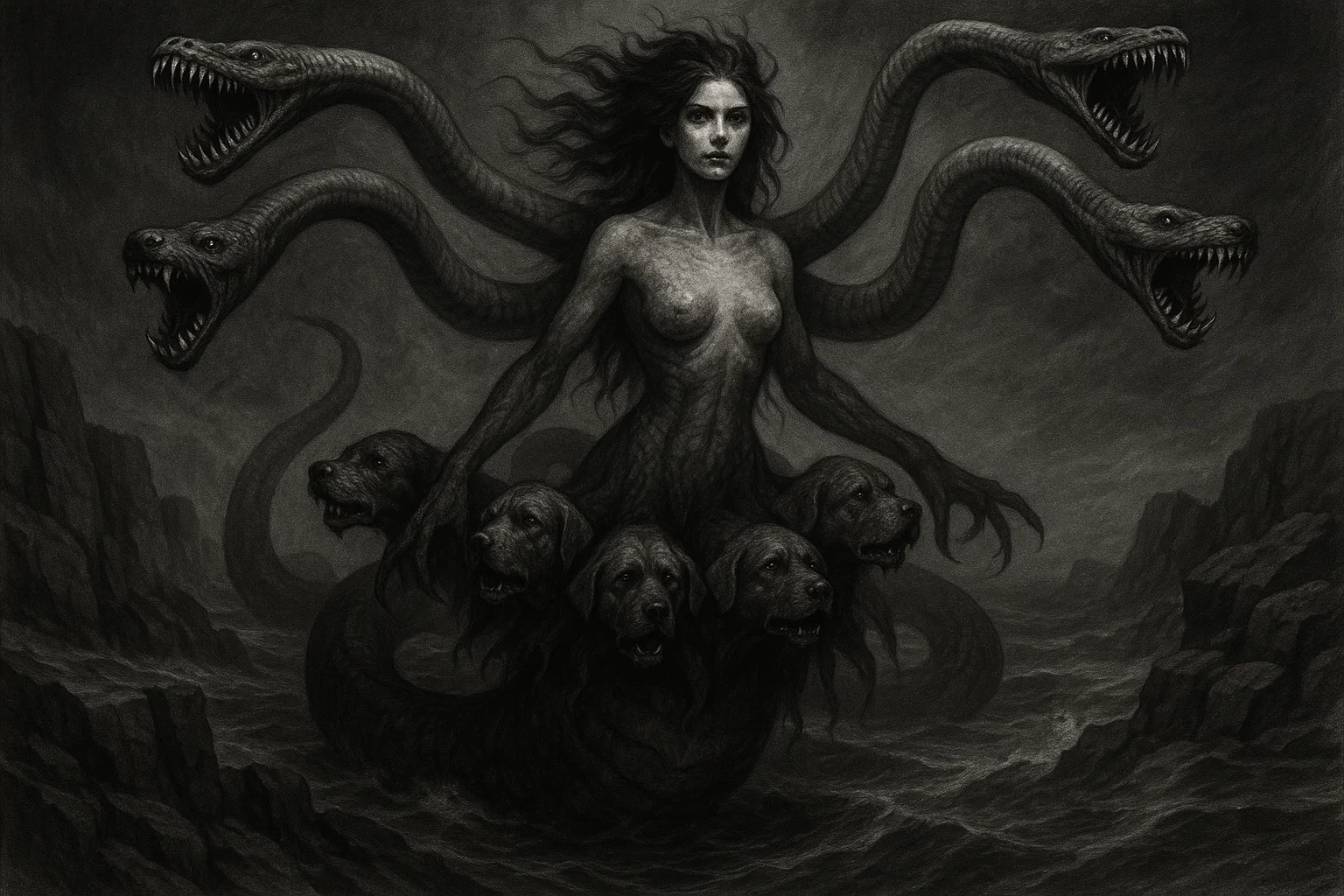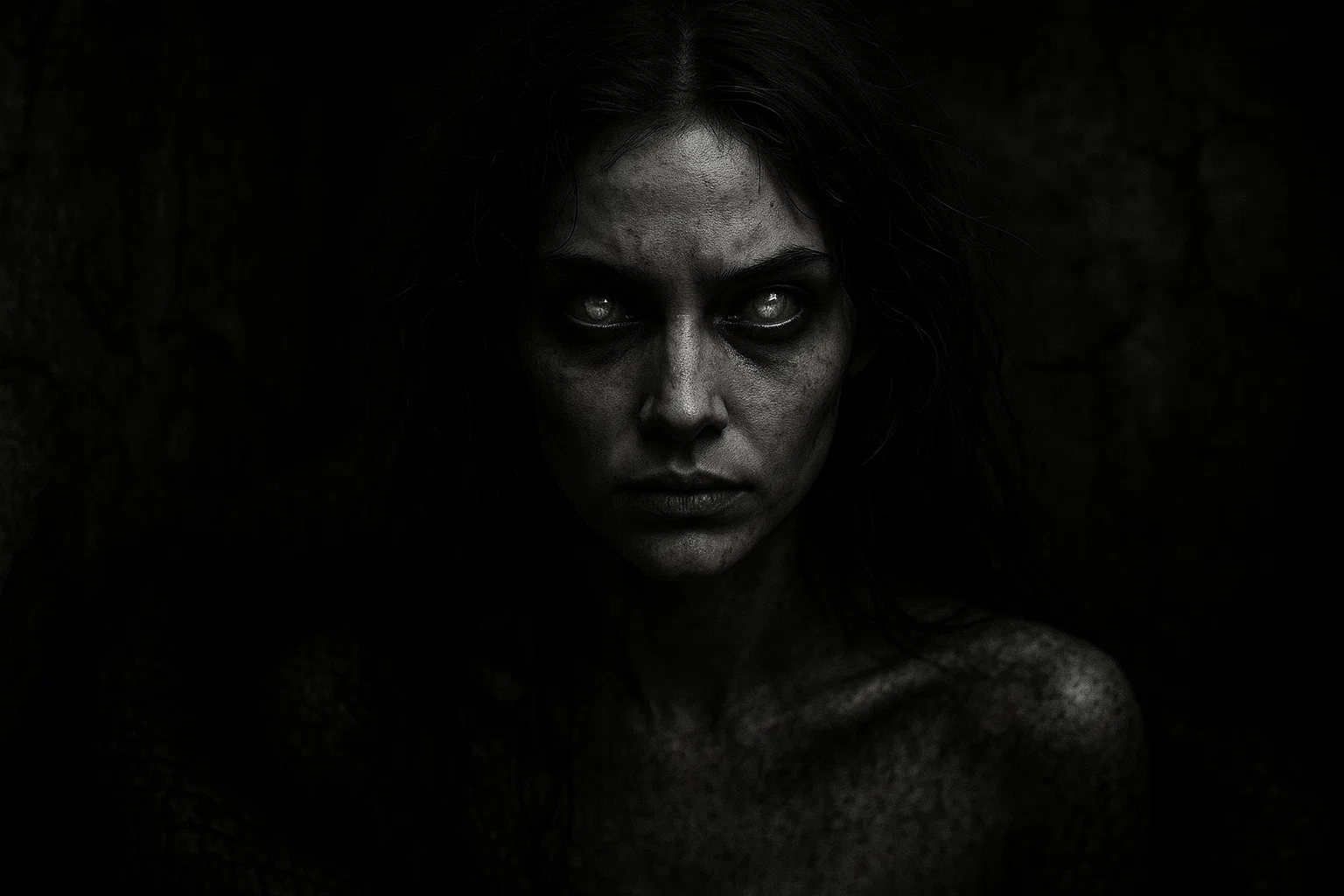In the quiet, rural landscapes of Louisiana, Missouri, a chilling mystery emerged in the early 1970s, captivating imaginations and sparking debates that linger to this day.
Momo the Monster, dubbed the Missouri Monster, is a cryptid shrouded in intrigue, described as a towering, hairy beast with a pumpkin-shaped head, glowing orange eyes, and a stench that could unsettle the bravest soul.
Reported sightings, eerie noises, and unexplained footprints transformed this small town into a hotspot for cryptozoology enthusiasts and monster hunters. Was Momo a misidentified animal, a clever hoax, or something far stranger lurking in the Mississippi River Valley?
Summary
What Is Momo the Monster?
Momo the Monster, short for Missouri Monster, is a cryptid reported primarily in Louisiana, Missouri, during the early 1970s, with the bulk of sightings occurring in the summer of 1972 and earlier reports in 1971.
This creature, deeply embedded in Missouri folklore, is described as a large, bipedal entity standing 6 to 7 feet tall, covered in dark, matted fur, with a distinctive pumpkin-shaped head and glowing orange eyes that pierce the twilight.
Its most unsettling trait is a putrid odor, often likened to rotting flesh, garbage, or sulfur, which precedes its appearances and lingers in its wake. The name “Momo” was coined by local media during the 1972 sightings, capturing the public’s imagination and cementing the creature’s place in cryptozoological lore.
The Momo phenomenon began with reports of a hairy, humanoid creature that seemed to evade capture, leaving behind only fleeting glimpses, strange sounds, and mysterious tracks.
Witnesses, ranging from children to seasoned outdoorsmen, described a creature that moved swiftly on two legs, occasionally carrying dead animals, and emitting guttural noises or high-pitched howls.
You May Also Like: Agares: The Duke of Hell Who Commands Earthquakes
Unlike broader cryptids like Bigfoot, Momo’s legend is tightly bound to a specific time and place, with most activity centered around Louisiana, Missouri, and its surrounding areas. The creature’s behavior—skulking near human settlements yet retreating into dense woodlands—suggests a reclusive nature, possibly territorial, and has fueled speculation about its origins, from an undiscovered primate to a supernatural entity.
The cultural impact of Momo extends beyond its sightings. The phenomenon sparked widespread media coverage, drawing attention from local newspapers, radio stations, and even national outlets. It inspired books, documentaries, and even a song titled “Momo the Monster” by local artist Scott Cooper, reflecting its enduring hold on popular imagination.
The creature’s brief but intense wave of sightings in 1972, coupled with its unique characteristics, distinguishes Momo from other cryptids, making it a focal point for researchers studying unexplained phenomena in the American Midwest.
The story of Momo also intersects with local history, as the Mississippi River Valley has long been a region of mystery, with tales of strange creatures and unexplained events predating the 1970s. Whether Momo was a fleeting visitor or a product of collective fear, its legend remains a cornerstone of Missouri’s cryptid heritage.
What Does Momo the Monster Look Like?
Eyewitnesses consistently depict Momo the Monster as a formidable, ape-like figure that combines humanoid and bestial traits. Standing between 6 and 7 feet tall, Momo is covered in long, coarse, coal-black or dark brown fur that appears matted and unkempt, giving it a shaggy silhouette.
Its most striking feature is its large, pumpkin-shaped head, which lacks a visible neck, creating a hunched, imposing posture. The creature’s face is obscured by its thick fur, but witnesses report glowing orange eyes that seem to emit an eerie luminescence, especially in low-light conditions.
These eyes, combined with a foul odor described as a mix of rotting carrion, sulfur, or wet garbage, make Momo a terrifying presence.
Additional physical characteristics include:
- Build: Muscular and robust, with long, powerful arms capable of grasping objects or prey, such as the dead dog reported in one sighting.
- Facial Features: Largely hidden by fur, with no discernible nose or mouth in most accounts, though some witnesses noted a “snout-like” feature.
- Movement: Bipedal, moving with surprising agility for its size, capable of fleeing quickly when startled.
- Odor: A pervasive stench, often described as overpowering, resembling decaying flesh or a moldy, animalistic smell.
- Hands and Feet: Large, with reports of handprints and footprints over 10 inches long, suggesting clawed or broad digits.
These traits, particularly the pumpkin-shaped head and glowing eyes, set Momo apart from other hairy hominids like Bigfoot or the Skunk Ape, while the odor aligns it with creatures like the Fetid Swamp Ape.
The consistency of these descriptions across multiple witnesses adds intrigue, though skeptics argue that shared cultural narratives or fear-induced exaggeration could account for the similarities.
Habitat: The Haunting Grounds of Momo
Momo the Monster is intrinsically tied to the rural landscapes of Louisiana, Missouri, a small town nestled in the Mississippi River Valley in Pike County.
The primary area of sightings is centered around Marzolf Hill, a prominent wooded ridge overlooking the town, and extends to the banks of the Mississippi River and its tributaries, such as Town Branch Creek, Noix Creek, and Indian Creek.
This region is characterized by dense hardwood forests, rolling hills, and fertile farmlands interspersed with small streams, wetlands, and limestone bluffs. The thick vegetation, including oak, hickory, sycamore, and cedar trees, provides ample cover for a large, elusive creature, while the proximity to water sources like the Mississippi River could support a creature reliant on aquatic ecosystems for food, hydration, or concealment.
The river’s muddy banks, dense floodplain forests, and secluded ravines create natural corridors for movement, allowing a creature like Momo to remain hidden while occasionally encountering humans.
The Louisiana, Missouri, area is rural, with a population of approximately 3,300 in the 1970s, and features a patchwork of agricultural fields, orchards, and small homesteads.
Marzolf Hill, a steep, forested ridge, is a focal point for sightings, offering elevated vantage points and dense underbrush ideal for a reclusive creature. Town Branch Creek and Noix Creek, flowing through the town, provide additional cover, with their banks lined with willows and thickets.
The Mississippi River, a major geographical feature, is flanked by the Great River Road, where sightings like Ellis Minor’s occurred. Some reports also place Momo across the river in Pike County, Illinois, particularly near wooded areas along the river’s eastern banks, suggesting a range spanning both states.
The Suddarth farm, northwest of Louisiana, represents the outermost reported location, indicating Momo’s potential to roam across a broader swath of the Mississippi River Valley.
Environmental Context and Paranormal Connections
The Mississippi River Valley is a biodiversity hotspot, home to diverse flora and fauna, including deer, coyotes, and waterfowl, which could provide sustenance for a large predator or omnivore.
The region’s limestone caves, sinkholes, and dense forests create a labyrinthine environment conducive to hiding. Its sparse human population in the 1970s, combined with limited artificial lighting, would have made nocturnal sightings more likely, as Momo was often reported at dusk or night.
The area’s agricultural activity, with fields of corn and soybeans, contrasts with its wilder pockets, creating a unique interface between human habitation and untamed wilderness.
Beyond Momo, the Louisiana, Missouri, area has a rich history of unexplained phenomena. In the early 1970s, residents reported UFO sightings, describing glowing orbs, pulsating lights, and silent, hovering objects in the night sky.
You May Also Like: Who Is the Demon Berith, Lord of Lies and Master of Deception?
These reports, peaking in 1972 alongside Momo sightings, have led some to propose a connection between the creature and extraterrestrial activity, though no evidence substantiates this.
Local folklore includes tales of haunted sites, such as the Ramsey Cemetery near Louisiana, where apparitions, disembodied voices, and cold spots have been reported for decades.
The Piasa Bird, a Native American legend from the Illinois side of the Mississippi, describes a winged, dragon-like creature painted on bluffs near Alton, Illinois, as a warning of a fearsome predator. While the Piasa Bird differs significantly from Momo, its legend reflects a regional tradition of monstrous beings tied to the river.
Other cryptid reports in the broader Missouri Ozarks and Illinois River Valley include fleeting accounts of large, hairy creatures, such as the Alton Giant, a rumored humanoid from the 1940s in Alton, Illinois, and occasional Bigfoot-like sightings in southern Missouri.
Native American tribes, including the Illini and Missouria, have oral traditions of spirits and creatures inhabiting the forests and rivers, such as the Windigo (a cannibalistic spirit) or shape-shifting entities. While no specific legend directly matches Momo, these stories suggest a cultural predisposition to interpreting unusual sightings as supernatural or monstrous.
The Mississippi River Valley’s history of unexplained events, combined with its ecological suitability, makes it a fertile ground for cryptid lore, with Momo as its most prominent modern manifestation.
Momo the Monster Sightings
The Momo the Monster sightings, concentrated in 1971 and 1972, form the heart of its legend, transforming Louisiana, Missouri, into a focal point for cryptozoology.
Below is a comprehensive table of all reported sightings:
| Date | Location | Witnesses | Description |
|---|---|---|---|
| Summer 1971 | Highway 79, north of Louisiana, MO | Joan Mills, Mary Ryan | Creature described as “half ape, half man,” gurgling noises, seen during picnic. |
| Summer 1971 | Near Louisiana, MO | Group of picnickers | Hairy creature emerged from woods, ate food while group locked themselves in car. |
| July 11, 1972 | Marzolf Hill base, Louisiana, MO | Terry Harrison (8), Wiley Harrison (5), Doris Harrison (15) | 6-7 ft creature, black fur, no neck, blood-flecked face, carrying dead dog, foul odor; dog’s eyes red, vomiting. |
| July 14, 1972 | Marzolf Hill, near water reservoir | Edgar Harrison, family, 40 armed locals | Clanging sounds, animal-like growl, moldy/horse/garbage smell; police found no creature. |
| July 15, 1972 | Noix Creek, Louisiana, MO | Clarence Lee, Richard Crowe | Creature seen near creek, hairy, tall, fleeing into woods; strange howling heard. |
| July 19, 1972 | Marzolf Hill and surrounding area | Edgar Harrison, Gus Artus, search party | Monster hunt with radios; found animal sounds but no creature; reports of fleeting shadow. |
| July 20, 1972 | Behind Harrison house, Marzolf Hill | Investigators, locals | Trampled brush, digging signs, >10-inch tracks, handprints in hard soil; foul smell. |
| July 21, 1972 | Great River Road, Mississippi River | Ellis Minor | Creature 20 ft away, coal-black hair, glowing eyes; fled when light shone. |
| July 24, 1972 | Indian Creek, near Louisiana, MO | Ralph Cairns, two hunters | Heard high-pitched screams, saw tall, hairy figure; found three-toed tracks. |
| Early August 1972 | Suddarth farm, northwest of Louisiana | Mr. & Mrs. Bill Suddarth, Clyde Penrod | High-pitched howling; four large prints in garden, 20 ft from anything; plaster cast made. |
Summer 1971: Joan Mills and Mary Ryan’s Highway Encounter
Date: Summer 1971
Location: Highway 79, north of Louisiana, Missouri
Witnesses: Joan Mills and Mary Ryan
Details: While driving along Highway 79, Joan Mills and Mary Ryan, two women from St. Louis, stopped for a roadside picnic in a wooded area north of Louisiana.
As they unpacked their lunch, they heard guttural, gurgling noises emanating from the nearby trees. Moments later, a creature emerged, described as “half ape, half man,” standing approximately 6 feet tall with dark, matted fur. Its eyes glowed faintly in the daylight, and a rancid smell, like rotting garbage, filled the air.
Terrified, the women scrambled into their car, locking the doors as the creature approached within 10 feet. It stared briefly before retreating into the forest, leaving the women shaken.
This encounter, one of the earliest documented Momo sightings, set a precedent for the creature’s appearance and behavior, foreshadowing the 1972 wave.
July 11, 1972: The Harrison Family’s Terrifying Encounter
Date: July 11, 1972
Location: Base of Marzolf Hill, outskirts of Louisiana, Missouri
Witnesses: Terry Harrison (8), Wiley Harrison (5), Doris Harrison (15)
Details: The Momo scare began in earnest when the Harrison siblings—Terry, Wiley, and Doris—were playing in their backyard near Marzolf Hill. Around mid-afternoon, they noticed a foul odor, described as a mix of rotting flesh and sulfur, followed by the appearance of a 6-7 foot creature.
Covered in black, blood-flecked fur, it had a pumpkin-shaped head, no visible neck, and glowing orange eyes that fixated on the children. The creature clutched a dead dog, its fur matted with blood, intensifying the horror.
The Harrisons’ dog, startled by the creature, barked furiously, its eyes appearing red before it began vomiting, a detail later attributed to extreme stress. Doris, the eldest, screamed and ran inside to alert their mother, who contacted their father, Edgar Harrison, and local police.
The children’s vivid descriptions, coupled with their visible distress—Terry and Wiley reportedly vomited for hours afterward—sparked a media frenzy and drew monster hunters to Louisiana, marking this as the pivotal Momo sighting.
You May Also Like: Battle House Renaissance Hotel Haunting: Room 552 Secrets
July 15, 1972: Noix Creek Sighting
Date: July 15, 1972
Location: Noix Creek, Louisiana, Missouri
Witnesses: Clarence Lee and Richard Crowe
Details: Clarence Lee, a local farmer, and Richard Crowe, a friend visiting from Kansas City, were fishing along Noix Creek at dusk when they heard rustling in the dense willows lining the creek. A tall, hairy creature, estimated at 6.5 feet, emerged from the underbrush, moving swiftly on two legs. Lee described it as “covered in dark fur, with eyes that glowed like embers in the fading light.”
The creature paused briefly, emitting a low growl, before bolting into the woods. A powerful stench lingered, described as moldy and animalistic. That night, both men reported hearing eerie, high-pitched howls echoing from the forest, distinct from any known wildlife. Lee, familiar with the area’s fauna, insisted it was no bear or bobcat.
This sighting reinforced Momo’s association with waterways and added to the growing sense of unease in the community.
July 21, 1972: Ellis Minor’s Riverside Encounter
Date: July 21, 1972
Location: Great River Road, Mississippi River, Louisiana, Missouri
Witnesses: Ellis Minor
Details: Ellis Minor, a respected local resident, was driving along the Great River Road at dusk, near the Mississippi River, when he spotted a creature standing on the riverbank, approximately 20 feet away. It was covered in coal-black fur, with a pumpkin-shaped head and glowing orange eyes that stood out against the darkening sky.
Minor described its face as “hidden by hair, like a shaggy mask,” with no discernible features except the eyes. When he directed his car’s headlights at the creature, it emitted a guttural growl and fled into the dense floodplain forest. Minor, shaken but composed, reported the sighting to Gust Artus, a local organizer of Momo searches, adding credibility due to his reputation as a level-headed community member.
This encounter, occurring along a major thoroughfare, heightened fears that Momo was venturing closer to human settlements.
July 24, 1972: Indian Creek Incident
Date: July 24, 1972
Location: Indian Creek, near Louisiana, Missouri
Witnesses: Ralph Cairns and two unnamed hunters
Details: Ralph Cairns, an experienced hunter and outdoorsman, was tracking game near Indian Creek with two companions when they heard piercing, high-pitched screams that Cairns described as “unlike any animal I’ve ever heard.”
As they scanned the moonlit woods, they glimpsed a tall, hairy figure moving swiftly through the trees, its silhouette revealing a pumpkin-shaped head and long, swinging arms. The creature vanished into the underbrush, leaving behind a foul odor. The next morning, the group discovered three-toed tracks, over 10 inches long, imprinted in the soft creek bank.
These tracks, unusual for the region, baffled Cairns, who was familiar with bear and deer prints. The screams and tracks intensified local fears, prompting further searches in the Indian Creek area, though no additional evidence was found.
Early August 1972: Suddarth Farm Footprints
Date: Early August 1972
Location: Suddarth farm, northwest of Louisiana, Missouri
Witnesses: Mr. and Mrs. Bill Suddarth, Clyde Penrod
Details: Mr. and Mrs. Bill Suddarth, farmers living northwest of Louisiana, were awakened by high-pitched howling near their property, described as “shrill and unnatural.”
Investigating at dawn, they discovered four large footprints in their garden, located 20 feet from any path or road, with no signs of human tampering. The prints, over 10 inches long, were deep and broad, suggesting a heavy creature. Clyde Penrod, a local outdoorsman, examined the tracks and made a plaster cast, noting their abrupt appearance and disappearance, as if the creature had “dropped from the sky.”
The Suddarths reported a lingering stench, like rotting carrion, around the garden. This sighting, the last major Momo report, marked the end of the 1972 phenomenon, leaving the community with more questions than answers.
Evidence, Investigations, and Theories
The Momo the Monster phenomenon is supported by limited physical evidence, numerous eyewitness accounts, and several community-driven investigations, none of which have conclusively proven or disproven the creature’s existence.
Evidence
Footprints
The most compelling physical evidence comes from the Suddarth farm in August 1972, where four large footprints, over 10 inches long, were found in a garden with no connecting tracks. Clyde Penrod, who made a plaster cast, noted their depth and clarity, suggesting a heavy creature. The tracks’ abrupt appearance and disappearance baffled investigators, as there were no signs of human tampering.
You May Also Like: The Slit-Mouthed Woman | Horror Story
Tracks near the Harrison house on July 20, 1972, were analyzed by Lawrence Curtis, director of the Oklahoma City Zoo. Some accounts claim Curtis concluded they were from an unknown primate, while others suggest he deemed them a hoax, creating a critical inconsistency. The Indian Creek sighting produced three-toed tracks, unusual for the region, as most large mammals (bears, deer) have four or five toes.
Analysis: The tracks’ unusual nature, particularly the three-toed prints, suggests an anomaly, but their disputed authenticity and lack of follow-up analysis weaken their evidential value. The Suddarth prints’ isolation raises questions about their origin, as a hoax would require significant effort to avoid leaving additional traces.
Eyewitness Accounts
Over a dozen witnesses, including children (Terry, Wiley, and Doris Harrison), adults (Ellis Minor, Joan Mills), and respected locals (Clyde Penrod, Police Chief Shelby Ward), provided detailed descriptions. The consistency in reports of a pumpkin-shaped head, glowing orange eyes, and foul odor across unrelated sightings lends some credibility. Accounts span diverse settings—highways, creeks, farms—yet share common themes, such as the creature’s swift retreat and nocturnal activity.
Analysis: The number and variety of witnesses, including credible figures like Ward, suggest a genuine phenomenon, but the absence of photographic or video evidence limits their reliability. The emotional intensity of sightings, particularly the Harrison children’s distress, supports the idea of a real encounter, though fear could exaggerate perceptions.
Environmental Signs
On July 20, 1972, investigators behind the Harrison house found trampled brush, signs of digging, and handprints in hard soil, indicating a large, heavy creature. A pervasive odor, described as moldy or carrion-like, was reported at multiple sites, aligning with witness accounts. Similar signs were noted near Noix Creek and Indian Creek, including broken branches and disturbed soil.
Analysis: These signs suggest a physical presence, but they are not specific enough to confirm a unique species. They could result from a large animal or human activity, though the odor’s consistency across sites is notable.
Concurrent Phenomena
The early 1970s saw a wave of UFO sightings in the Louisiana, Missouri, area, with reports of glowing orbs, pulsating lights, and silent objects in the sky. These coincided with Momo sightings, particularly in July 1972, prompting speculation about a connection, possibly extraterrestrial or interdimensional.
Analysis: While intriguing, the UFO reports lack direct evidence linking them to Momo, making this a speculative correlation. The cultural context of the 1970s, with heightened interest in UFOs, may have influenced perceptions of Momo.
Investigations
Police and Community Searches
On July 19, 1972, Police Chief Shelby Ward organized a 20-person search party, equipped with two-way radios, to scour Marzolf Hill and surrounding areas. The group reported hearing animal sounds and glimpsing a fleeting shadow, but no creature was found.
A second search, led by Vic Meyer of Clarksville and Ward, explored the Mississippi River banks but uncovered only mundane debris, such as beer cans, highlighting the challenge of tracking an elusive entity.
On July 20, 1972, investigators behind the Harrison house found trampled brush, digging marks, and tracks, but the creature remained elusive. These searches, while thorough, were hampered by the dense terrain and lack of concrete leads.
Media and Cryptozoological Interest
The 1972 sightings attracted significant media attention, with local radio stations like KSIS and newspapers reporting daily updates. The frenzy drew national interest, including from Hayden C.
Hewes of the International Unidentified Flying Object Bureau, who investigated the UFO-Momo connection but found no definitive proof. Monster hunters and amateur cryptozoologists flocked to Louisiana, setting up camps and patrols, but their efforts yielded no new evidence.
The media amplified public fear, turning Momo into a cultural phenomenon, though it also fueled skepticism about possible exaggeration or hoaxes.
Theories
Rogue Black Bear
Plausibility: A disoriented or diseased black bear could account for some sightings, as bears can stand upright, reach 6-7 feet, and emit odors if sick or scavenging.
However, black bears were not common in northeast Missouri in the 1970s, and their tracks (four-toed, clawed) don’t match the reported three-toed prints or humanoid shape. The pumpkin-shaped head and glowing orange eyes also conflict with bear anatomy, as bears have rounded heads and reflective, not glowing, eyes.
Fit: Unlikely, as the specific traits (head shape, bipedal movement, three-toed tracks) and behavior (carrying dead animals) don’t align with bears. The lack of bear sightings in the area further weakens this theory.
Hoax
Plausibility: The intense media coverage, involvement of young witnesses, and lack of photographic evidence suggest a possible prank or mass hysteria.
The 1970s saw a surge in Bigfoot interest, potentially inspiring locals to fabricate sightings. The sudden cessation of reports after August 1972 supports this, as a hoax may have lost momentum.
However, the consistency across unrelated witnesses, physical signs (tracks, trampled brush), and genuine fear expressed by figures like the Harrisons complicate a pure hoax explanation.
Fit: Highly plausible, as the media frenzy and cultural context could amplify exaggerated or fabricated stories. However, the physical evidence and witness credibility suggest some sightings may have been genuine.
Unknown Primate
Plausibility: The tracks, if authentic, and the humanoid description (bipedal, muscular, hairy) suggest a relict hominid or undiscovered primate. The Mississippi River Valley’s dense forests and water sources could theoretically support a small population of such a creature.
You May Also Like: Is Batsquatch Real? The Mount St. Helens Mystery
However, the absence of fossils, consistent sightings post-1972, or genetic evidence (e.g., hair, scat) undermines this theory. The three-toed tracks are particularly puzzling, as no known primate has three toes.
Fit: Intriguing but speculative, as no known primate matches Momo’s exact description in North America. The lack of ongoing sightings suggests a transient or one-off phenomenon.
Supernatural Entity
Plausibility: The concurrent UFO sightings, glowing eyes, and sudden appearances have led some to propose a paranormal or extraterrestrial origin, possibly tied to Native American spirit legends like the Windigo.
The Mississippi River Valley’s history of unexplained phenomena supports this culturally, but scientifically, it lacks evidence, as no testable data links Momo to supernatural forces.
Fit: Unlikely from a scientific perspective, though compelling in folklore. The UFO connection remains speculative, driven by the era’s fascination with extraterrestrial phenomena.
Misidentified Known Animal
Plausibility: Animals like a large bobcat, coyote, or diseased dog could be mistaken for Momo, especially in low light. The glowing eyes could result from retinal reflection, common in nocturnal animals, and the odor from a sick or scavenging animal.
However, these animals are significantly smaller, lack bipedal movement, and don’t produce three-toed tracks or match the reported size and head shape.
Fit: Possible for some sightings, particularly in poor visibility, but fails to account for the full range of traits, especially the tracks and consistent humanoid descriptions.
Most Likely Theory: The hoax theory, combined with possible misidentification, is the most plausible explanation. The media frenzy, cultural fascination with Bigfoot, and lack of definitive evidence (photos, videos, biological samples) suggest that many sightings were exaggerated or fabricated, possibly inspired by national cryptid trends.
Misidentified animals, such as a large canine or bear, could account for some encounters, particularly in low-light conditions.
However, the consistency of eyewitness accounts, physical signs (three-toed tracks, trampled brush), and credible witnesses like Ellis Minor and Clyde Penrod leave room for the possibility that an unusual creature—perhaps a transient or unknown animal—was briefly present in the Mississippi River Valley.
The unknown primate theory, while speculative, cannot be entirely dismissed due to the tracks’ anomalies, but it requires extraordinary evidence to be substantiated.
Comparison With Other Similar Cryptids
Momo the Monster shares traits with other hairy hominids and cryptids, particularly those reported in forested, riverine, or swampy environments:
| Cryptid Name | Region | Height | Distinctive Features | Habitat |
|---|---|---|---|---|
| Bigfoot (Sasquatch) | North America | 7-10 ft | Large, bipedal, ape-like | Forests, mountains |
| Fouke Monster | Arkansas, USA | 7 ft | Hairy, aggressive, glowing eyes | Swamps, forests |
| Skunk Ape | Florida, USA | 5-7 ft | Strong odor, ape-like | Everglades, swamps |
| Yeti | Himalayas | 6-10 ft | Snow-adapted, bipedal | Snowy mountains |
| Yowie | Australia | 7-8 ft | Large, bipedal, territorial | Forests, bushland |
| Orang Pendek | Indonesia | 3-5 ft | Small, primate-like, bipedal | Jungles |
| Mapinguari | Brazil | 6-9 ft | One eye, backward feet (mythical) | Amazon rainforest |
| Barmanou | Afghanistan | 6-7 ft | Human-like, hairy, elusive | Mountains |
| Almas | Central Asia | 5-6 ft | Relict hominid, human-like | Mountains, steppes |
| Honey Island Swamp Monster | Louisiana, USA | 7 ft | Three-toed tracks, swamp-dweller | Swamps, bayous |
| Grassman | Ohio, USA | 7-9 ft | Bigfoot-like, aggressive | Forests, grasslands |
| Mothman | West Virginia, USA | 7-8 ft | Winged, red eyes, prophetic | Rivers, abandoned areas |
| Chupacabra | Puerto Rico, Latin America | 3-4 ft | Spiky back, livestock attacks | Rural areas, farms |
Momo’s pumpkin-shaped head and foul odor align closely with the Skunk Ape and Honey Island Swamp Monster, both associated with strong smells and riverine or swampy habitats.
The Fouke Monster, reported in nearby Arkansas, shares regional proximity and similar physical traits, suggesting a cluster of hairy hominid sightings in the American South.
The Honey Island Swamp Monster’s three-toed tracks are particularly notable, echoing the unusual tracks found near Indian Creek.
Unlike the winged Mothman or the livestock-attacking Chupacabra, Momo’s traits are distinctly primate-like, reinforcing comparisons with Bigfoot, Grassman, and Yowie. Its specific association with the Mississippi River Valley distinguishes it from mountain-dwelling cryptids like the Yeti or Barmanou.
Is Momo the Monster Real?
The question of whether Momo the Monster is real remains an open enigma, suspended between compelling eyewitness accounts and a frustrating lack of definitive proof.
The 1972 Momo scare produced remarkable consistency in descriptions—glowing orange eyes, pumpkin-shaped head, and a putrid stench—across diverse witnesses, from children (the Harrisons) to respected adults (Ellis Minor, Clyde Penrod) and even law enforcement (Police Chief Shelby Ward).
The discovery of physical signs, such as three-toed tracks, trampled brush, and handprints, suggests that something unusual was present in Louisiana, Missouri.
The emotional intensity of sightings, particularly the Harrison children’s distress and the community’s organized searches, supports the idea of a genuine phenomenon, at least in the minds of those who experienced it.
You May Also Like: Is Detroit Cursed by the Nain Rouge?
However, the absence of photographs, videos, or verifiable biological evidence (e.g., hair, scat, bones) casts significant doubt. The tracks, while intriguing, are disputed, with conflicting analyses from Lawrence Curtis, and their three-toed nature doesn’t align with known animals.
The sudden cessation of sightings after August 1972, combined with the media frenzy and cultural fascination with Bigfoot in the 1970s, points strongly to a hoax or mass hysteria, possibly amplified by misidentified animals like bears, large canines, or even a diseased bobcat.
The concurrent UFO sightings add a layer of intrigue, resonating with the region’s history of unexplained phenomena and Native American legends of spirits like the Windigo, but this remains speculative without testable evidence.
The hoax theory, blended with misidentification, is the most plausible explanation, as it accounts for the lack of ongoing sightings, the media’s role in amplifying fear, and the absence of concrete evidence.
Yet, the consistency of accounts, the unusual tracks, and the credible witnesses leave room for the possibility that an unknown creature—perhaps a transient primate or an anomalous animal—briefly roamed the Mississippi River Valley.
The unknown primate theory, while scientifically unlikely without fossil or genetic evidence, cannot be entirely dismissed due to the tracks’ anomalies and the region’s ecological suitability.
Ultimately, Momo the Monster endures as a cornerstone of Missouri folklore, a haunting reminder of humanity’s fascination with the unknown. Whether a real creature, a collective illusion, or a blend of both, Momo remains a shadowy enigma, forever etched in the cultural tapestry of the American Midwest.



